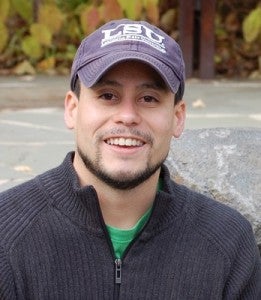Regional Anesthesia in the Main OR
The regional anesthesia rotation at UVA’s main hospital is set up in a way that maximizes resident exposure to regional anesthetic techniques. On a typical day, we will perform at least six blocks. We work closely with the orthopedic surgical teams; some days we place half a dozen femoral nerve catheters for total knee replacements, while other days there will be numerous shoulder procedures for which we perform interscalene brachial plexus blocks. The week of regional at the main hospital and the two weeks of regional at the Outpatient Surgery Center provide CA-2 residents with both breadth and depth of experience in regional techniques.
We are fortunate at UVA to have regional anesthesia attendings who are experienced in both ultrasound guided and peripheral nerve stimulator guided nerve block techniques, so that we receive ample experience in both. Here’s a day from the end of my OR regional rotation.
Friday – I have been on my regional rotation for 4 days, and feel like I’m getting the hang of this regional anesthesia thing.
06:15 I arrive at the regional team section of the preoperative unit. I remember that based on the regional fellow’s assessment of the OR schedule, we have two potential blocks for first-start cases. Today there seems to be a number of ankle procedures on the schedule.
06:30 After drawing up local anesthetic for the first two cases, I meet my first patient, who is apprehensive about receiving a sciatic and saphenous nerv
e block. After some reassurance and detailed explanation of the procedure, he agrees that the nerve block will help his postoperative pain.
06:45 I chat with my attending about our first patient, and he agrees with my plan. This is the first time I have performed this block, but my attending walks me through every aspect, and it goes without a hitch. My nervous patient is surprised when I say we are finished, and declares that he “didn’t feel a thing.”
07:00 The regional anesthesia fellow has consented the next patient, to whom I introduce myself. She is an athlete who has previously received regional anesthesia, and definitely wants a femoral nerve block for today’s knee procedure. Excellent! I have performed 9 femoral nerve blocks earlier in the week, so this one is a piece of cake.
08:00 A brief break until the next patient arrives. I go upstairs to check up on the patients who received nerve catheters the previous day. One patient needs to have his infusion rate increased; all the others are doing well.
09:45 Two more blocks placed. My attending sits down with me to discuss several techniques for placing a saphenous block. I appreciate that there is enough time for a didactic session during the morning.
11:00 I receive a page from the PACU that a patient that underwent an ankle fracture repair is in agony and is interested in a “rescue block.” Good thing I had consented him for a postoperative sciatic and saphenous nerve block! In 15 minutes, the block is done and the patient is feeling much better.
13:00 After lunch, I am joined by a medical student. I enjoy having students on my service, and I walk him through a supraclavicular brachial plexus block.
14:45 A patient with a shoulder dislocation has been added to the OR schedule, and I believe an interscalene brachial plexus block will help with his postoperative pain. His block is a bit challenging, but with ultrasound guidance we are able to verify that the nerve roots indeed are surrounded by local anesthetic.
15:30 After tidying up paperwork, I make some quick phone calls to follow-up on patients who received blocks yesterday who were discharged home. I also quickly round on the post-block inpatients on the wards, who are all doing well.
16:00 I check out to the OB anesthesia call resident. As I am walking out the door looking forward to the weekend, I realize that I have done 27 blocks this week. I feel very accomplished; not bad for my first week on regional! Next week, I am the regional anesthesia resident at the Outpatient Surgery Center, where the peripheral nerve block volume is even higher. Very few programs can offer this volume of regional anesthesia cases.

